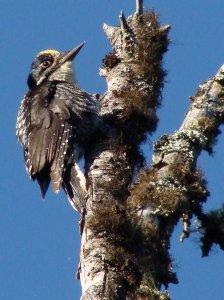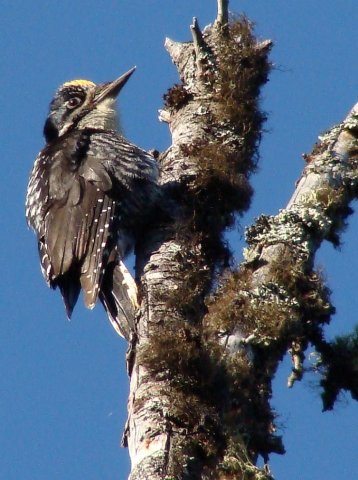
New Brunswick’s forestry practices are affecting bird populations, according to Marc-André Villard, a biologist specializing in forest ecology at the Université du Québec à Rimouski.
Villard told CBC Shift in December that clearcutting and the conversion of mixed wood forest to plantations are affecting bird habitat as well as their ability to move across the landscape. Villard discussed the research conducted in his lab on the impacts of forest landscape changes, specifically on the ovenbird and different species of woodpeckers.
The ovenbird, a songbird that builds its nest on the forest floor, where it also feeds on invertebrates, is less likely to move across plantations than through mixed forest because the plantation floor has less abundant invertebrates.
Woodpeckers (the hairy, downy, pileated, northern flicker, American Three-toed and yellow-bellied sapsucker to name a few of those found in New Brunswick’s forest) and other forest birds are affected by forestry practices that are changing landscapes and reducing the number of older and dead trees. Fewer larger and dead trees does not only affect woodpeckers that feed there for insects and spiders but also other birds that use the cavities they create for nesting.
Villard was a member of J.D. Irving Ltd.’s forest research advisory committee for 15 years and spoke out publicly against the government of New Brunswick’s 2014 forest strategy for not consulting scientists. The policy slashed forest conservation forest on Crown land from the 2012 threshold of 28 percent to 23 per cent.
Matt Betts, another forest ecologist who has co-authored reports for the Conservation Council, including “Working with the Woods: Restoring Forests and Community in New Brunswick” and is now an associate professor in forest Ecosystems and Society at Oregon State University, called the 2014 forest strategy “a radical change and an experiment with the potential to result in local extinction of some birds and wildlife in the province.”
New Brunswick’s Auditor General Kim MacPherson referenced the numerous studies and recommendations calling for a reduction of clearcutting in Crown forests in her report in 2015 that recommended improvements to forest management standards if the science warrants such changes.
As New Brunswickers await the outcome of the Gallant government’s promise to review and possibly change the 2014 forest plan, the Conservation Council agrees with Villard that it is not too late to conserve forest for biodiversity, including the songbirds, woodpeckers and owls, and both hope that the government prioritizes the public, including scientists, in future forest management decisions. The Crown Lands and Forest Act needs updating to ensure that the public has a say on protecting our birds and the diversity of life in our forest.

